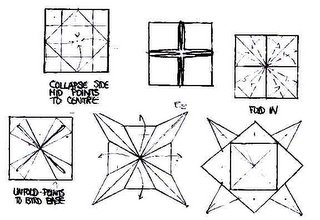THE ANDERSON PROJECT:
A one man show at The Barbican Theatre
[An except from the programme notes:]
Freely inspired by two of Hans Christian Andersen's timeless fables, The Dryad and The Shadow, and drawn from the renowned Danish author's visit to France at the time of the Paris World's Fair, The Andersen Project picks up on some of Lepage's recurring interests – the counterpoint of romanticism and modernism, the tension between 'high' and 'low' art and the fragile bridge between the past and the present. However, in this new solo work, he also explores more troubling territories – questions of sexual identity, unfulfilled fantasies and the thirst for recognition and fame that are taken from Andersen's own life and writings which serve as a filigree to this modern tale.
In what has become a hallmark of his dazzling solo projects, Lepage weaves the story of a Quebecois artist whose travels and chance encounters take him on a voyage of understanding and self-discovery. In this new work, Lepage assumes the role of a distracted young writer, in Paris at the invitation of the Opera Gamier, commissioned to come up with the libretto for a children's opera based on an Andersen fairy tale.
LePage’s performances in London are all too brief and never to be missed. They always present a provocative and thoughtful work stimulating a new way of thinking about conventional notions from a new perspective.
He combines back projection, video filmed and projected during the performance and a number of unusual visual effects to unsettle the most common prejudices and traditional approaches to thought. It is more than magic / prestidigitation…it is pure fantasy, but firmly based in reality. His work is characterized as daring and inventive.
I have often found it quite spectacular.
[An except from the programme notes:]
Freely inspired by two of Hans Christian Andersen's timeless fables, The Dryad and The Shadow, and drawn from the renowned Danish author's visit to France at the time of the Paris World's Fair, The Andersen Project picks up on some of Lepage's recurring interests – the counterpoint of romanticism and modernism, the tension between 'high' and 'low' art and the fragile bridge between the past and the present. However, in this new solo work, he also explores more troubling territories – questions of sexual identity, unfulfilled fantasies and the thirst for recognition and fame that are taken from Andersen's own life and writings which serve as a filigree to this modern tale.
In what has become a hallmark of his dazzling solo projects, Lepage weaves the story of a Quebecois artist whose travels and chance encounters take him on a voyage of understanding and self-discovery. In this new work, Lepage assumes the role of a distracted young writer, in Paris at the invitation of the Opera Gamier, commissioned to come up with the libretto for a children's opera based on an Andersen fairy tale.
LePage’s performances in London are all too brief and never to be missed. They always present a provocative and thoughtful work stimulating a new way of thinking about conventional notions from a new perspective.
He combines back projection, video filmed and projected during the performance and a number of unusual visual effects to unsettle the most common prejudices and traditional approaches to thought. It is more than magic / prestidigitation…it is pure fantasy, but firmly based in reality. His work is characterized as daring and inventive.
I have often found it quite spectacular.






